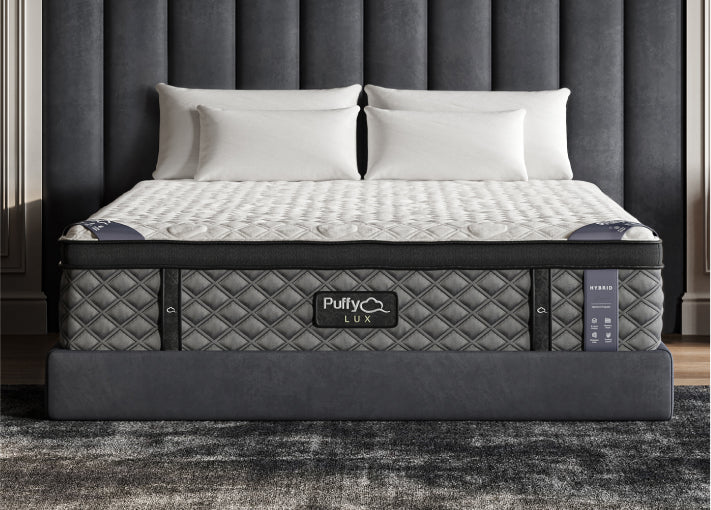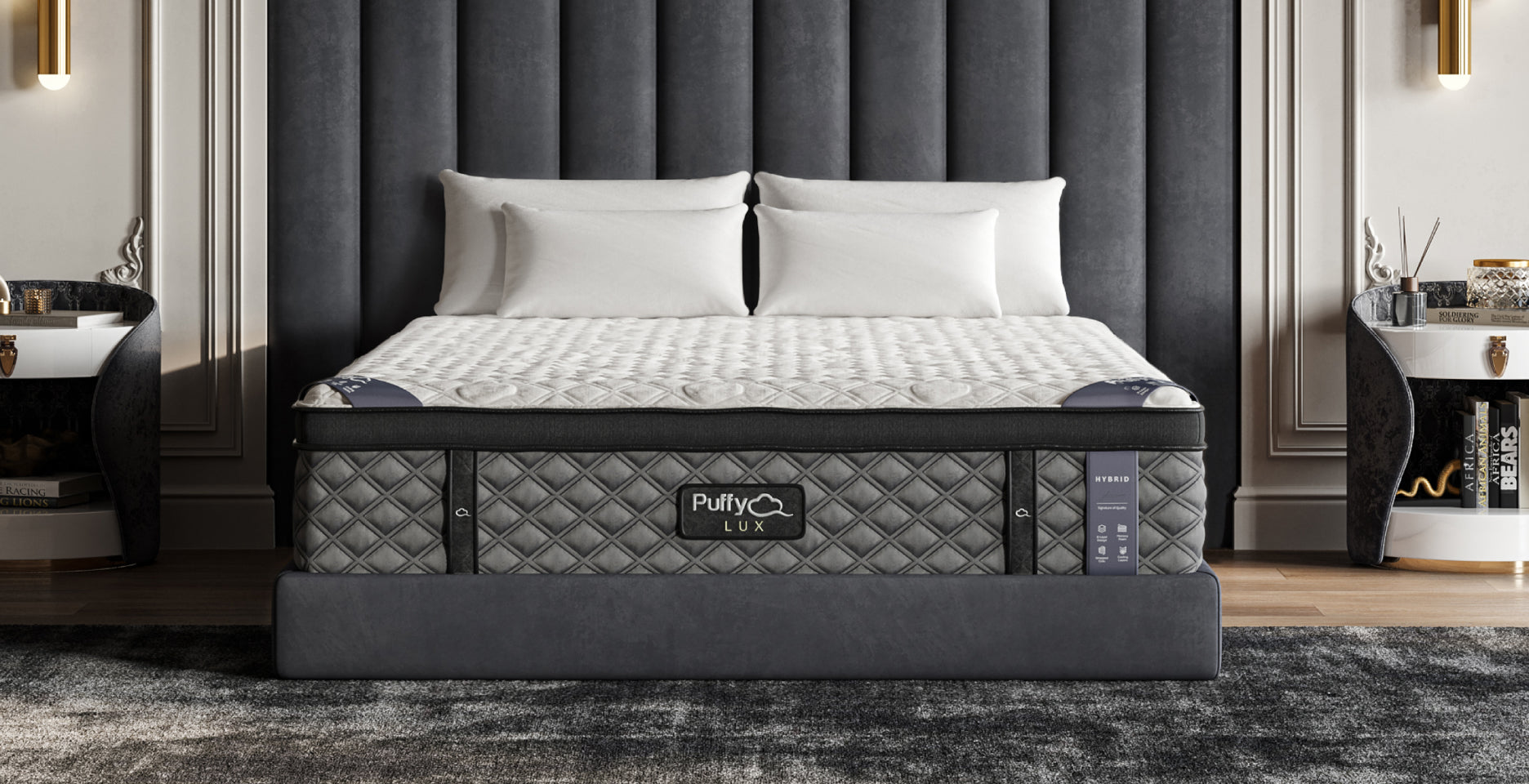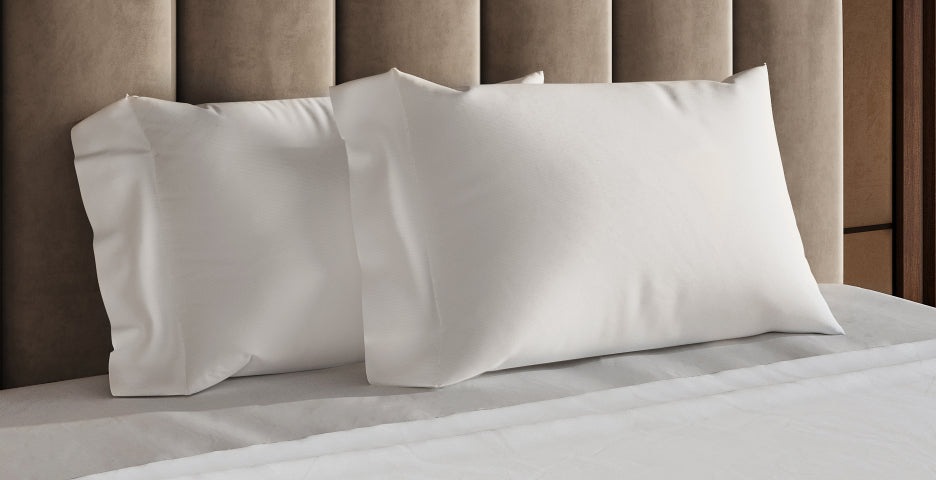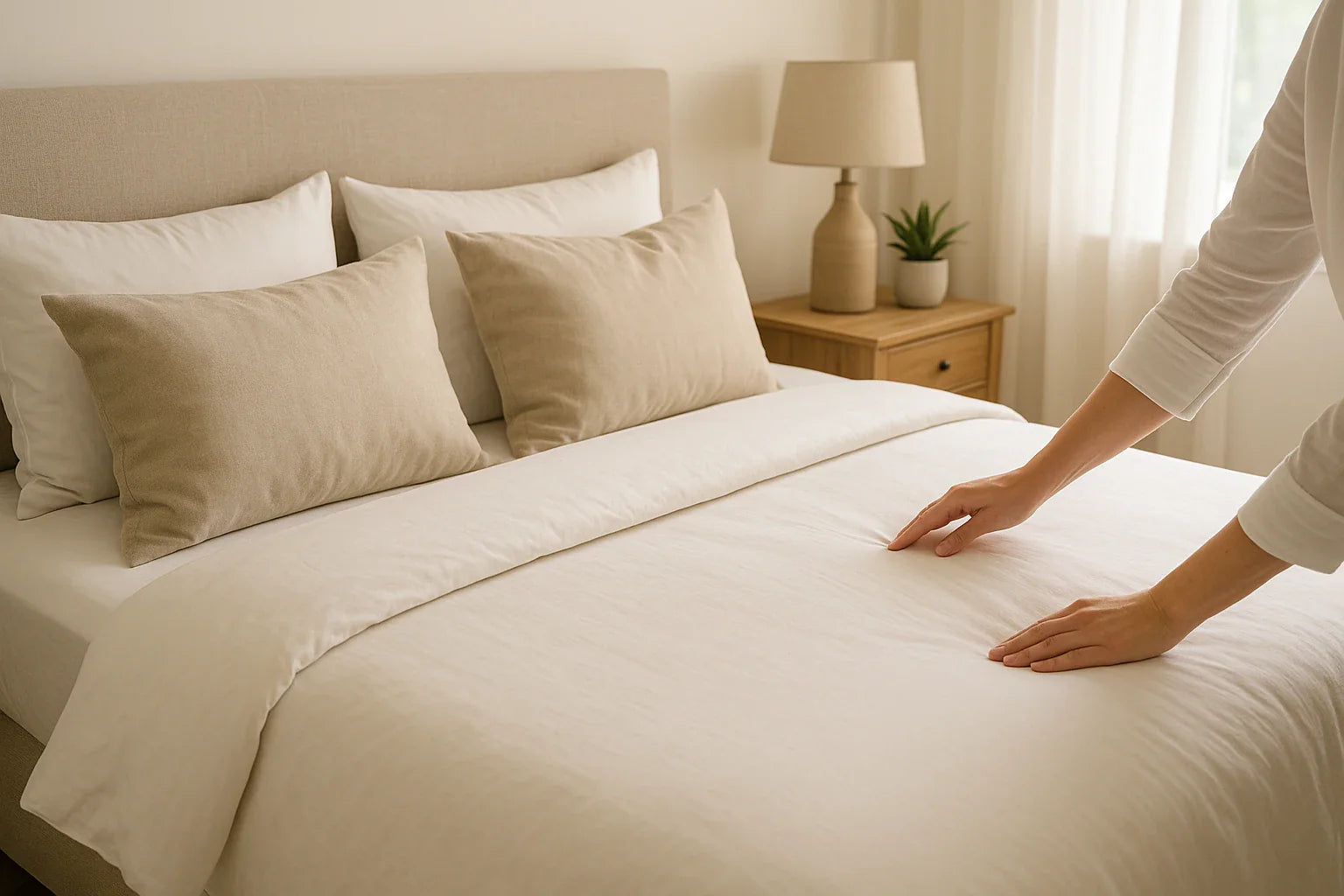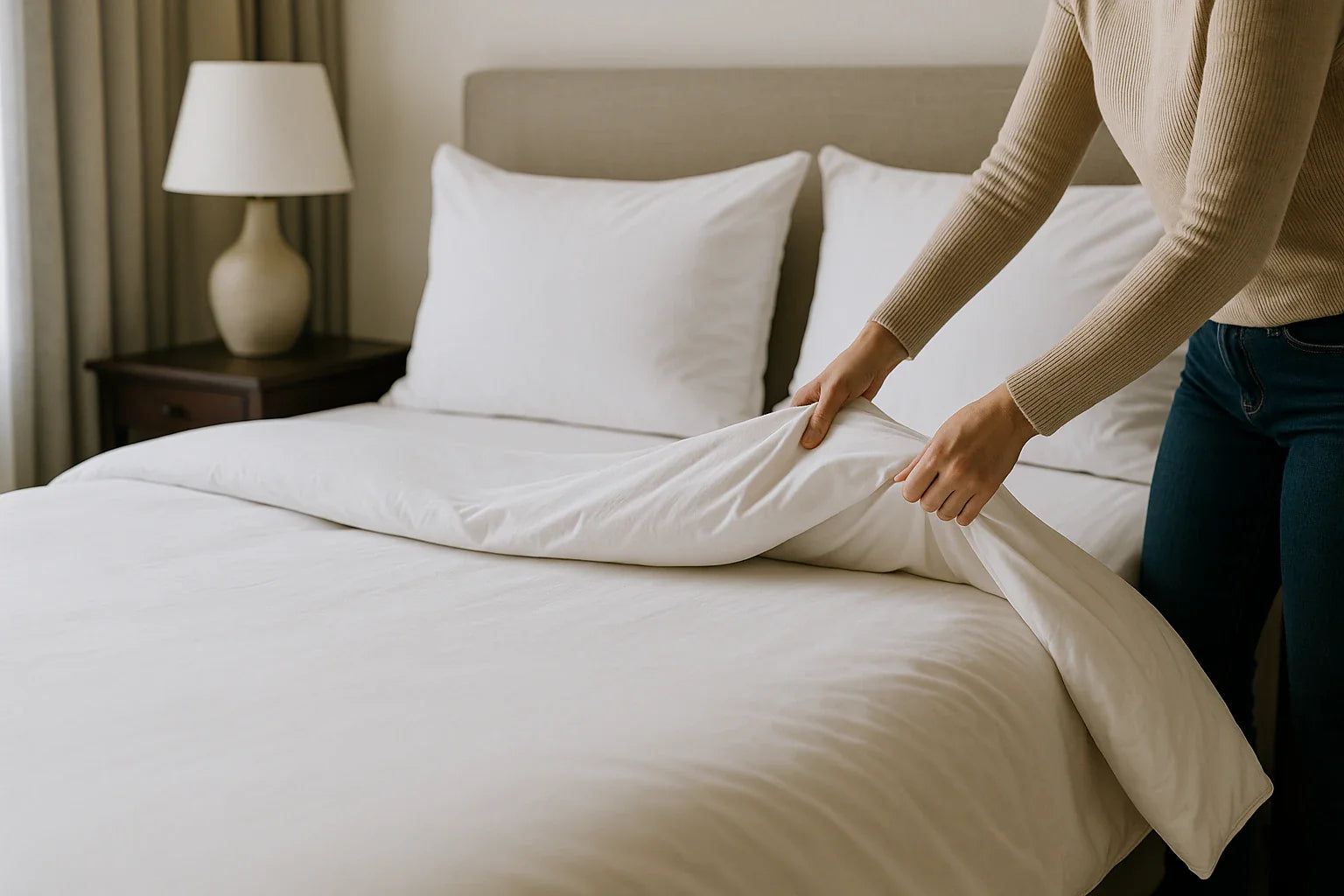Key Takeaways
- Pillows can contribute to headaches if they do not provide proper neck and spinal support.
- An old or unsupportive pillow may lead to muscle tension, which can trigger headaches.
- Pillow height and firmness play a crucial role in maintaining proper spinal alignment.
- Allergens and dust mites in pillows can cause sinus headaches and discomfort.
- Choosing the right pillow, such as one designed for optimal support, can help alleviate morning headaches and improve sleep quality.
Headaches can often be traced back to a seemingly harmless factor: your pillow.
If you regularly wake up with head pain, your pillow may be misaligning your spine or triggering muscle tension in your neck and shoulders.
Understanding how your pillow affects your sleep quality and contributes to headaches can help you make the right adjustments for a more restful, pain-free night.
Can a Pillow Give You a Headache?
Yes, a pillow can indeed cause headaches. The way you position your head and neck while sleeping has a direct impact on muscle tension and circulation, both of which can trigger headaches. A poor-quality or ill-fitting pillow can lead to issues such as:
-
Neck strain and stiffness – A pillow that is too high or too low can place strain on the neck muscles, leading to tension headaches.
-
Misalignment of the spine – Sleeping with an unsupportive pillow can cause the cervical spine to fall out of alignment, contributing to discomfort and pain.
-
Restricted blood flow – Pressure on certain areas of the head and neck can reduce circulation, leading to headaches upon waking.
-
Allergy-related headaches – Dust mites, mold, and other allergens in pillows can cause sinus congestion, which may result in a headache.
Why Does My Pillow Give Me a Headache?
If you consistently wake up with a headache, your pillow may be the culprit. Below are some of the most common reasons a pillow may contribute to head pain:
1. Poor Neck and Head Support
A pillow that is too thick or too flat can force your neck into an unnatural position, putting strain on muscles and nerves. This tension can build overnight, resulting in a headache by morning.
2. Wrong Pillow Material or Firmness
The firmness of your pillow should be suited to your sleeping position:
-
Side sleepers require a firmer pillow to maintain proper spinal alignment.
-
Back sleepers need a medium-firm pillow to support the natural curve of the neck.
-
Stomach sleepers benefit from a soft, low-loft pillow to avoid excessive neck strain.
3. Old or Worn-Out Pillows
Over time, pillows lose their shape and support, leading to misalignment and muscle tension. If your pillow is lumpy, sagging, or older than two years, it may be time for a replacement.
4. Pillow Height and Positioning
The loft (height) of your pillow affects how well your head and neck are supported:
| Sleeping Position | Ideal Pillow Height |
|---|---|
| Side Sleeper | High loft (4-6 inches) |
| Back Sleeper | Medium loft (3-5 inches) |
| Stomach Sleeper | Low loft (2-3 inches) |
If your pillow doesn’t provide the right height for your sleeping position, it may contribute to headaches by straining your neck and upper back muscles.
5. Allergies and Sensitivities
Dust mites, pet dander, and mold can accumulate in pillows over time, triggering allergy symptoms such as nasal congestion, sinus pressure, and headaches. Using hypoallergenic pillow covers and washing pillowcases regularly can help minimize exposure to allergens.
Pairing your pillow with a Puffy Lux Mattress can further enhance spinal alignment, reducing tension headaches and improving overall sleep comfort.
How to Prevent Headaches from Your Pillow
If you suspect your pillow is causing headaches, consider making the following adjustments:
1. Choose the Right Pillow for Your Sleeping Position
Selecting a pillow tailored to your preferred sleeping position can improve spinal alignment and reduce the risk of headaches.
2. Replace Your Pillow Regularly
A pillow should be replaced every 1-2 years to maintain proper support and hygiene. If your pillow no longer retains its shape or feels lumpy, it may be time for an upgrade.
3. Use a Cooling or Adjustable Pillow
Memory foam or gel-infused pillows provide contouring support, while adjustable pillows allow you to customize the loft to your preference.
4. Keep Your Pillow Clean
Regularly washing pillowcases and using a hypoallergenic pillow protector can help reduce allergen buildup and prevent sinus-related headaches.
5. Pair Your Pillow with a Supportive Mattress
A high-quality mattress complements the support provided by a good pillow. A Puffy Cloud Mattress offers pressure relief and spinal alignment, helping to minimize tension-related headaches for a more restful night’s sleep.
Final Thoughts
If you’re struggling with frequent headaches, your pillow may be a contributing factor.
Ensuring proper neck support, choosing the right firmness and loft, and maintaining pillow hygiene can all play a role in reducing sleep-related head pain.
Making small adjustments to your sleep setup, including upgrading to a high-quality mattress and pillow, can lead to a more comfortable and headache-free night.

$1,350 in savings
Transform your comfort with the Puffy Lux.
Relax into award-winning comfort with this hybrid mattress:
- 8 layers of cloudlike luxury.
- Medium-plush feel.
- Gel-infused cooling.
- 101-night sleep trial.

